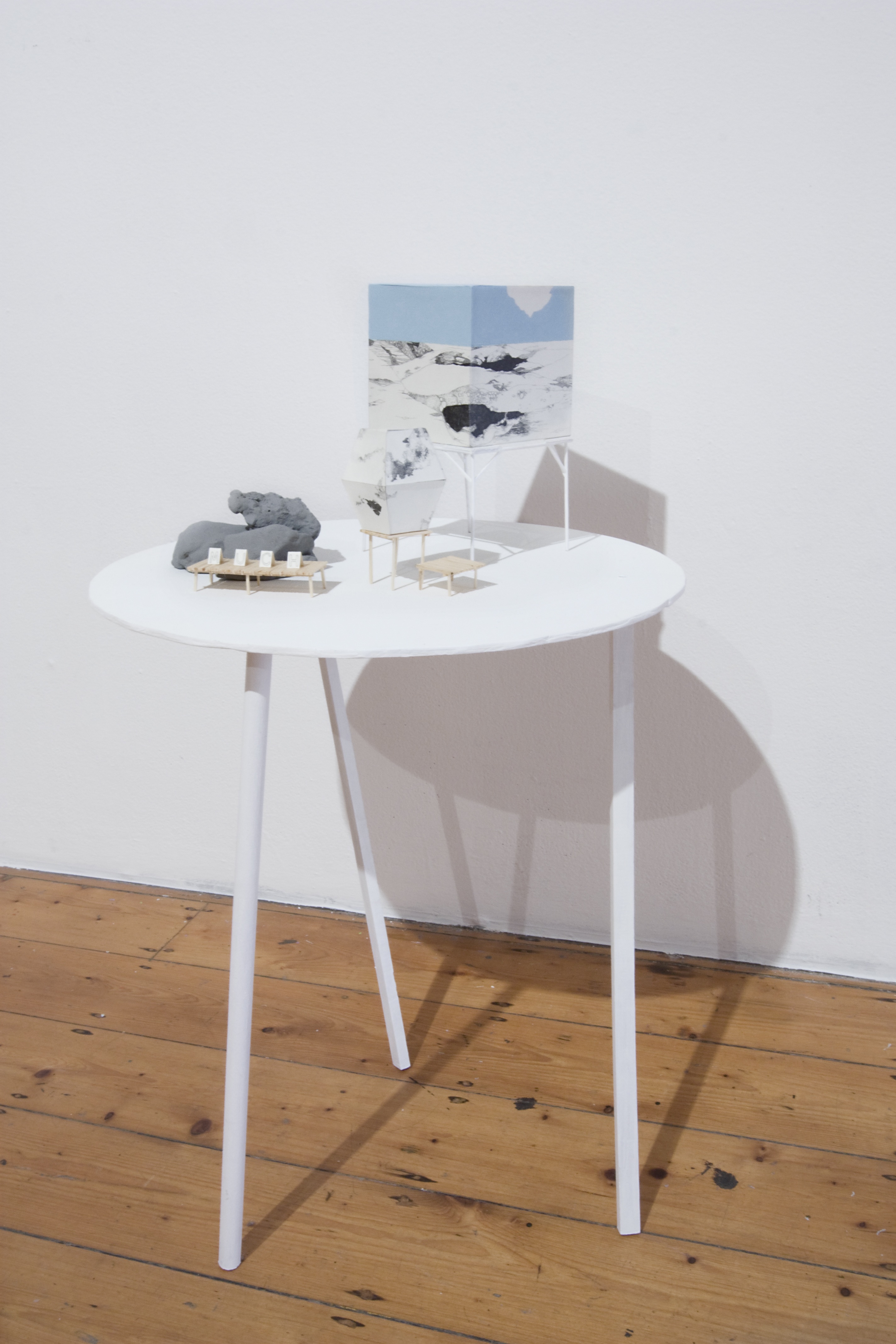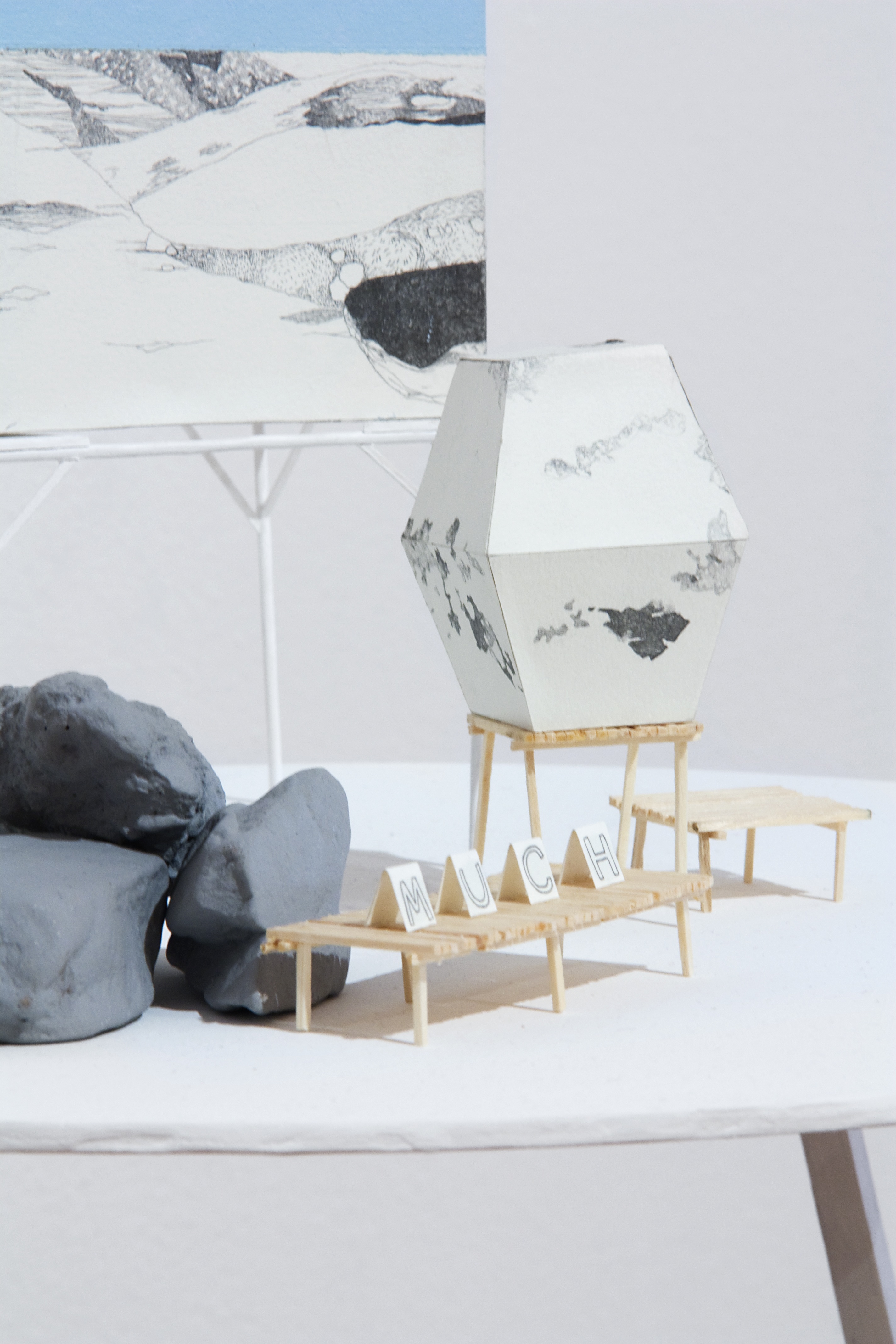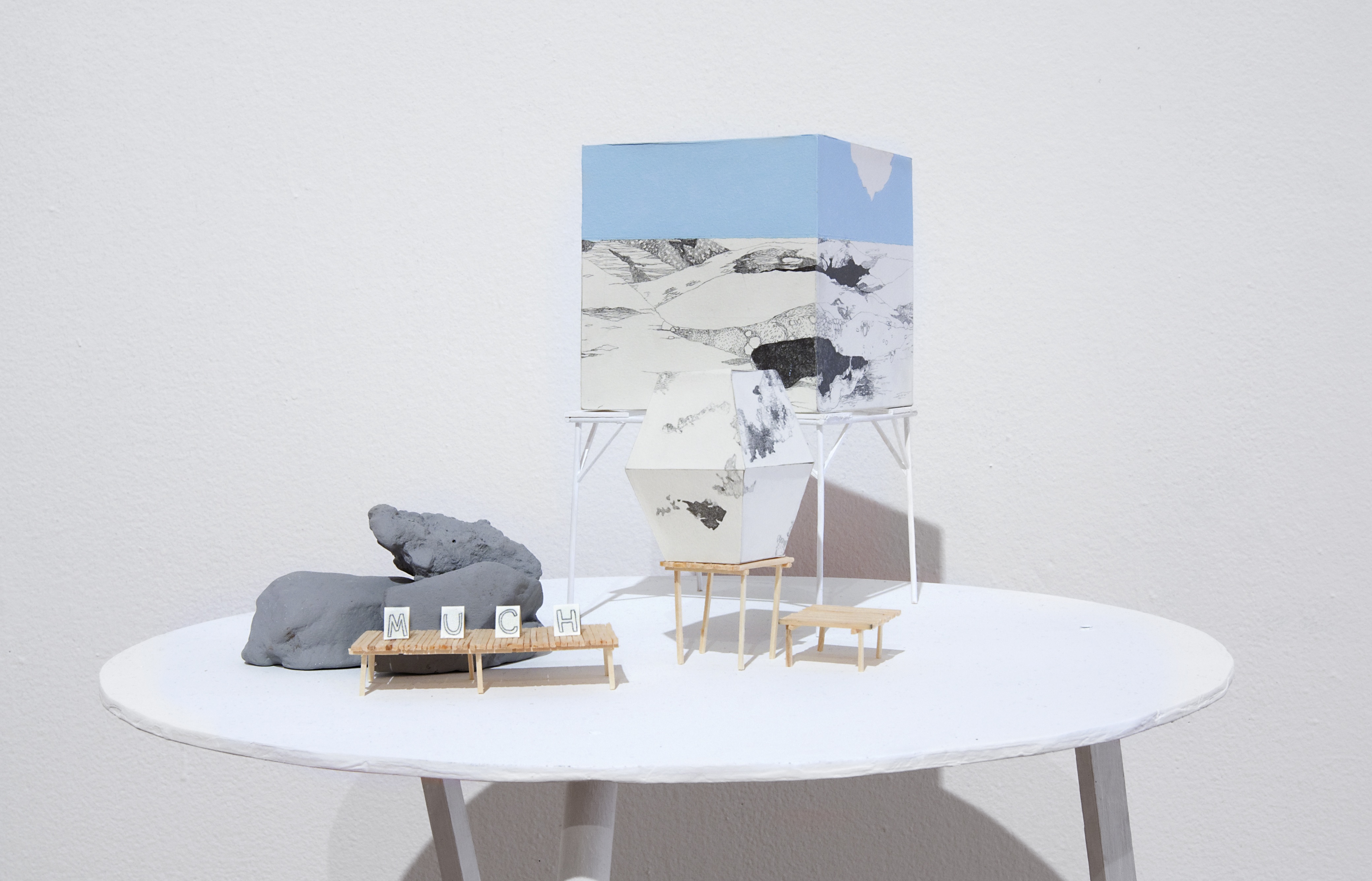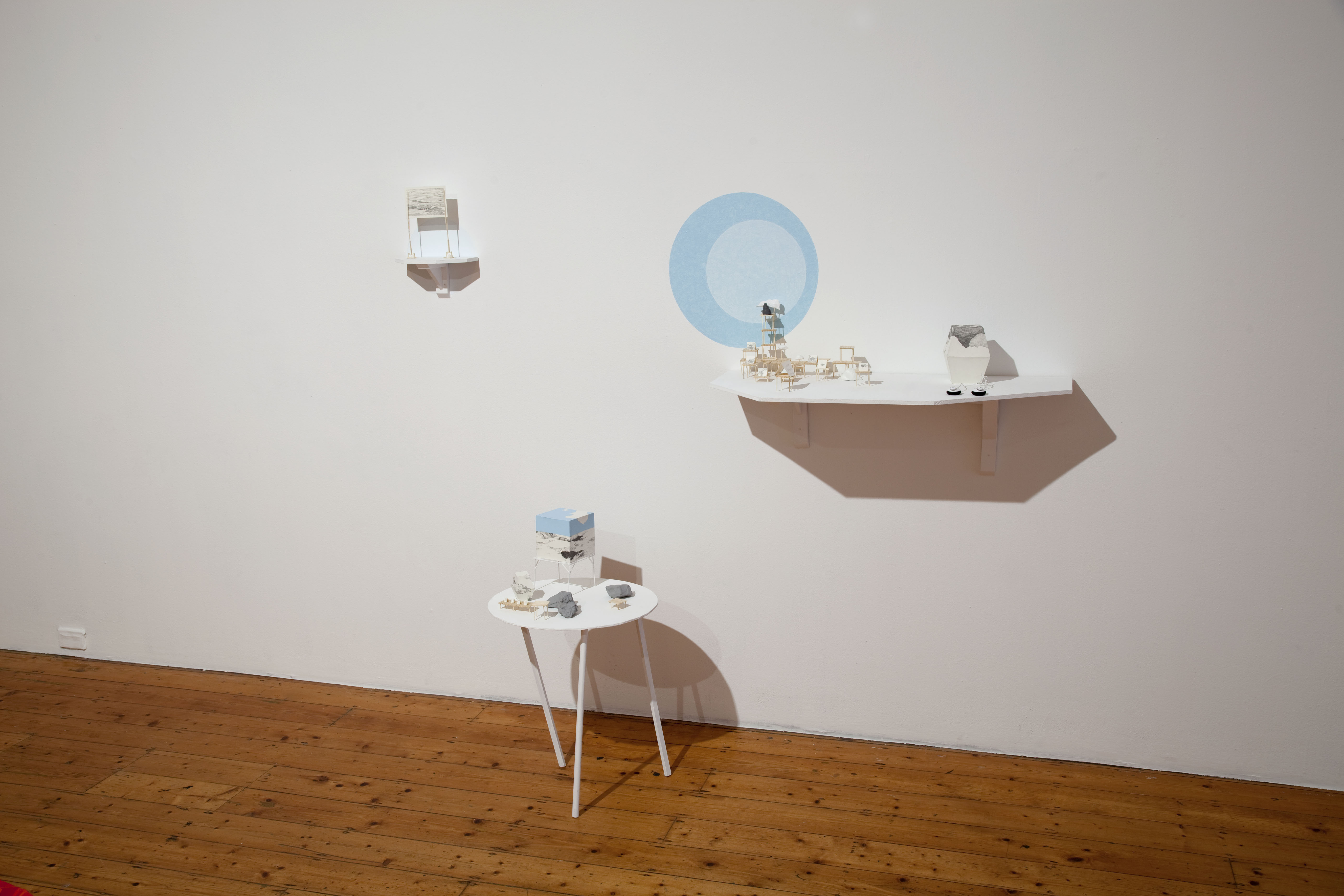Mercy Street
curated by Anusha Kenny
Gertrude Contemporary Art Spaces, Next Wave Festival
2010
![]()
![]()
![]()
![]()
curated by Anusha Kenny
Gertrude Contemporary Art Spaces, Next Wave Festival
2010






Mercy Street catalogue, Anusha Kenny
The premise for this exhibition was drawn from a news story published by The Age in 2009 titled ‘Victim’s family beg for mercy for driver.’[i] The article outlined that two young men, best friends, were involved in a car crash and that the passenger had died, while the intoxicated driver survived. While these circumstances are not unusual, what was notable was that the family of the victim had used their Victim Impact Statement not to express their anger at the driver, but to plead for a lenient sentence because imprisoning him would be like losing another member of their family.
The grace this family displayed in what must have been the most traumatic moment of their lives was humbling. This story – a minor news item in the margins of the paper – spoke to some of the most fundamental societal questions around forgiveness, judgment and justice. While such tragedies often spark emotionally charged and polarising public debates, the assumptions underlying such reactive positions are rarely examined. Yet, these assumptions can play a powerful political role in informing criminal legislation, as well as shaping societal understandings of morality.
Behind the public, vitriolic debate, lie private understandings of mercy and justice. The exhibition takes its title from Anne Sexton’s poem 45 Mercy Street, which speaks of frustration, failure and forgiveness in the context of a personal history. These concepts operate both outside and inside the law, shadowing personal as well as public relationships. Mercy Street endeavored to explore how private understandings of mercy affect public decision-making and formalized ideas of justice.
The process of ‘formalization’ carries through from the legal to the artistic, in that ‘shape’ can be given to amorphous, fluid concepts, a process full of risk and compromise. The five artists included in the exhibition share an awareness of the precariousness of ethics and morality, inscribed into their works through aesthetic fragility, constant motion, and intermittence. In contrast to the bluntness of legislation, the works in the exhibition formalize emotion and address human frailty with compassion and flexibility.
Alanna Lorenzon’s practice is driven by the search for what she describes as a ‘poetic logic.’[ii] In developing Sea Over Mountain Sky(2010), Lorenzon was drawn to Simone Weil’s assertion that all of the ‘natural movements of the soul are controlled by laws analogous to those of physical gravity,’[iii] such that the rise and fall of human emotions are controlled by forces analogous to weight, movement, suspension and gravity. Weil would call ‘Grace’ the only action defying her law; inversely, she would call submitting to desire to hurt those who have hurt you ‘obedience to the laws of gravity’, which she saw as ‘the greatest sin’. [iv]
Drawing together rocks, delicate works on paper, sound, and single words or phrases, Sea Over Mountain Sky (2010) combines a sense of calm with a sense of heaviness. Lorenzon’s interest in the poetics of geological matter and the erosion of language connects her practice to that of Robert Smithson, who wrote that the mind and earth ‘are in a constant state of erosion, mental rivers wear away abstract banks, brain waves undermine cliffs of thought, ideas decompose into stones of unknowing, and conceptual crystallizations break apart into deposits of gritty reason…’ The disintegration of the word ‘PLEASE’ under layers of sediment, located in a detail of Lorenzon’s installation, carries a gentle emotional resonance. The word, and its attendant sentiment, seems to have literally broken up along its fault lines under the pressure of layers of time. Smithson wrote that poetry itself is forever eroding, ‘an always dying but never dead language,’ a product of exhaustion.[v] At this point of exhaustion and erosion, rationalism gives way, and in its place an enlightened sort of spirituality emerges.
The tableau of Sea Over Mountain Sky (2010) has a sense of completeness in its composition and structure. The works require concentration and discipline, but provide an elevating stillness similar to the rewards of meditative practice. Lorenzon, who herself practices meditation daily,[vi] suggests that her work provides a respite from the constant movement of the outside world. It is a place of elevating stillness, but requires concentrated awareness and discipline. This stillness is, in a sense, a ‘disobedience’ to the constant movement forward demanded by the modern world.
This constant motion is explored in CJ Conway’s The World is Bound By Secret Knots (2010), a kinetic, magnetic sculpture that explores the visible and invisible forces that drive human action. The table is constructed from two sheets of glass supported by stacks of books borrowed from the artist’s university library. The books seem to be a random selection from all of the Western world’s fields of enquiry: philosophy, art, psychology and science amongst them. On the table small magnets are constantly moving, pulled and repelled by each other and the invisible strings connected to rotating motors hidden on the roof.
Essential to The World is Bound By Secret Knots (2010) are the unseen magnetic forces that sustain its movement. Conway is interested in the work of seventeenth century philosopher and scientist Athanasius Kircher, who considered the magnetic forces of attraction and repulsion as the driving forces of all aspects of creation, governing love, sympathy, hatred, chemical reactions, planetary action, medicinal plants and stones, the wind, hydraulics, the tides, musical harmony, and even the nature of God himself, whom Kircher deemed ‘the Central Magnet of the Universe’.[vii] However, for Conway there is no single fixed point of attraction. The centre cannot hold, and what is left is a state of constant instability driven by invisible tensions. Although the work gives the overall appearance of balance and symmetry, at close range it becomes a cacophony of voices: texts, tomes, and physical forces each pulling in a different direction, creating a pervasive sense of emptiness and instability.
The instability is either anxiety-inducing or freeing: at any moment, a magnet could fall, the wires could twist, or someone could destabilise the piled books that serve as table legs. In this way, the work reminds the viewer to accept the transience of each moment.
Kaori Kato’s Attune to the earth (2010) has survived on the precipice of disintegration. Since learning origami from her mother when she was a child in Japan, Kaori Kato has been interested in paper folding, and the limits of the medium. Her sculptural installation is comprised of three blood red lava-like forms flowing outwards from each other, created with paper folded into a pattern the artist herself invented. It is at once strong and fragile, inviting but menacing. The work explores formal tensions, and the work is the product of much trial and error. Despite the work’s fragility, the artist encourages a degree of interaction, and sees the objects as tactile, reactive to changes in the environment and almost alive.
Kato’s practice is scientific in that it explores the patterns and equations that underlie living matter. She deconstructs the natural ‘sublime’ into discrete units – an origami fold – and then rebuilds an object that again seems to surpass the sum of its parts to become something breathtaking. This process bears an interesting resemblance to the mathematical theories of Gregor Cantor, whose work on set theory implies the existence of ‘an infinity of infinities.’[viii] The theory recognises that infinities can be treated like discrete units, and thus can be added and subtracted from each other, a suggestion that appears to be self-contradictory. Certain equations require the mathematician to hold in mind these two directly opposing concepts, and at the time Cantor was considered an heretic.
Similarly to CJ Conway’s The World is Bound By Secret Knots (2010), Kato’s Attune to the earth (2010) momentarily reconciles opposing forces. Balancing gracefully between strength and fragility, it defies the limits of its medium.
Sherry McLane Alejos’ video installation Onus (2010) addresses the gap that exists between an event and its reconstruction. This ‘gap’ is of particular significance to criminal legal proceedings, in which the Court attempts to piece together the ‘truth’ of what happened through the interpretation of evidence.
The title ‘Onus’ calls to mind the criminal law’s ‘burden of proof,’ which places the onus on the prosecution to prove, beyond reasonable doubt, the guilt of the accused. This principle is critical to the presumption of the innocence of the accused, and thus is essential to what our society considers to be a just legal system.
For McLane Alejos, this onus is felt as a physical burden on the body: the stack of books, that signifier of law and knowledge, literally bear down on the body of the artist. The flickering of the image and its repetition dislocates the work from linear time, much like evidential analysis in Court requires a suspension of time in order to re-piece and order what happened in the past. These overt marks of post-production create transparency, a ‘lifting of the veil,’ another aim of the justice system.
Standing before Onus (2010) is like watching someone waiting to be sentenced – the moments before the hammer, or the knife, falls. The body is on all fours, the strobe lights flicker, and the intensity builds. The law is brought down to its knees, sexualised, humiliated, but still cold and uncompromising. The repetition stops time, slows it down, to create an almost unbearable intensity.
Nicholas Waddell’s shrines to inadequacy, failure, and frailty challenge the worship of individual achievement. His practice borrows from diverse religious and cultural iconography and locates their points of contact. His vocabulary is filled with contemporary reference points: football stars, school sports trophies, Zen, Christianity, computer games.
For example, St. Rock (2010) pictures the late Elvis Presley wearing a Catholic icon earring featuring the Patron Saint of Dogs, St. Rock. St. Rock is said to have dedicated his life to helping the sick, but when he eventually fell sick himself, he fled from the community to avoid infecting others. In the forest, near death, a dog came and licked his sores, which cured him. He then returned to the town healed, but the town believed he must be a witch and sentenced him to death.[ix]
A sense of the tragi-comic is present in Mr A. Certo (2010), in which the contents of a deceased person’s vacuum cleaner are preserved next to their ashes. ‘A Certo’ translates in Latin to ‘without a doubt.’
Waddell’s interest in gaming theory is reflected in the underlying assumptions of his practice: life is no more than a game, and achievements are nothing more than points on some non-existent score board. This is gallows humour: every laugh is overshadowed by the fact of real emptiness and the presence of the one certain truth and ‘great equaliser’: that everyone will one day die.
The works presented in Mercy Street are marked by their aesthetic and theoretical ‘precariousness,’ manifest in their formal attributes and thematic concerns. Far from presenting an ethical model, or masking the contradictions inherent in society, these works address the reality of the conditions under which humans must operate.
What emerged is a conception of mercy, as distinct from justice and forgiveness, as a negotiation between retributive impulses and leniency. The ability to be merciful seems to compel us to hold in mind contradictory concepts and their attendant impulses: on the one hand, the wrong committed, and the harm that it causes, has to be acknowledged, but on the other hand, the good in the person, their circumstances, and the value of overall peace. Above all mercy is an act of restraint. Ultimately, the exhibition is an elegy to those who have been able to show grace when revenge would be just as appropriate.
[i] Steve Butcher, ‘Victim’s family beg for mercy for driver,’ The Age, 17 May 2009, p 9.[ii] Alanna Lorenzon, in email correspondence with the author, 15 May 2010.[iii] Simone Weil, Gravity and Grace, Taylor & Francis, London, 1987 (translation from French by Emma Craufurd), p 1.[iv] Ibid, p 3.[v] Robert Smithson, Jack Flam (ed.), The Collected Writings, University of California Press, California, 1996, p 107.[vi] Alanna Lorenzon, in email correspondence with the author, 15 May 2010.[vii] Paula Findlen (ed.), Athanasius Kircher: The Last Man Who Knew Everything, Routledge, NewYork, 2004, 1-48.[viii] J J O’Connor and E F Robertson, ‘A History of Set Theory,’ http://www-history.mcs.st-andrews.ac.uk/HistTopics/Beginnings_of_set_theory.html, accessed 10 June 2010.[ix] Nick Waddell, interview with the author, 1 June 2010.see also CJ Conway’s The World is Bound By Secret Knots (2010)